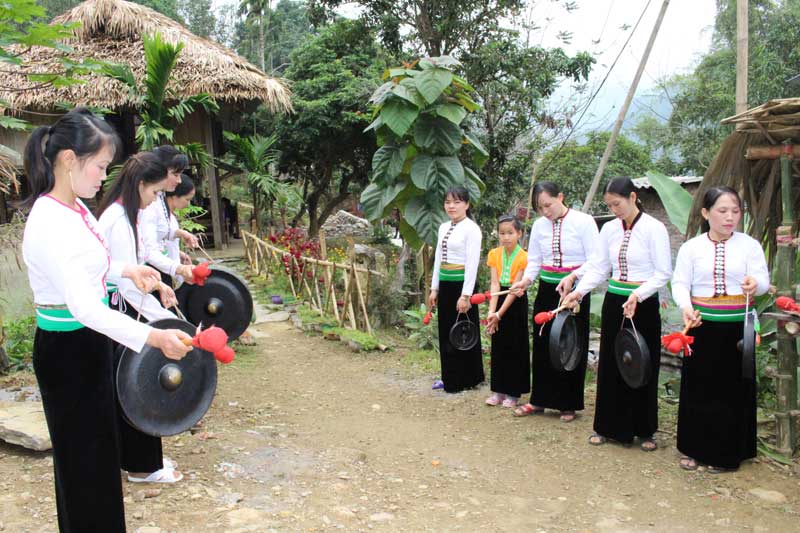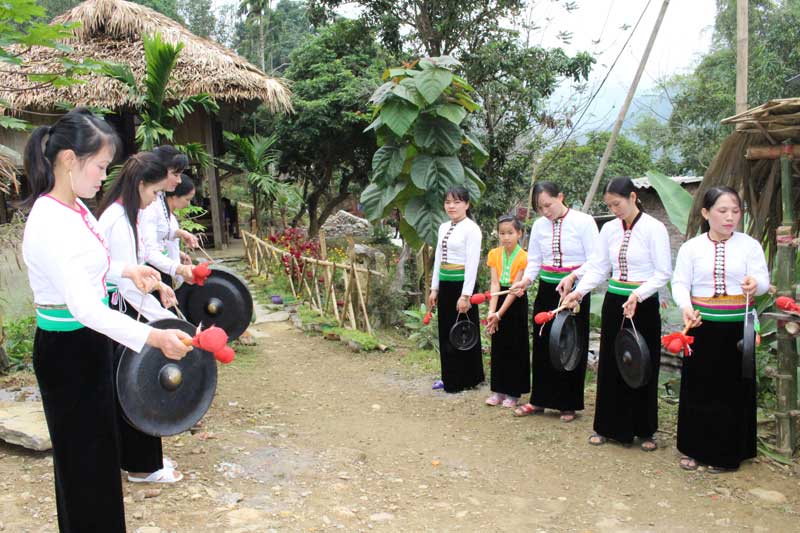


Currently, there are 5 households doing community tourism in Da Bia hamlet, but 100% of the people in the village have supported those who are doing tourism with the desire to promote the uniqueness of Muong Ao Ta culture to tourists.
 The
charming girls of Muong ethnic people are welcoming visitors to Da Bia village,
Tien Phong commune (Da Bac).
The
charming girls of Muong ethnic people are welcoming visitors to Da Bia village,
Tien Phong commune (Da Bac).
Anyone coming to Da Bia (Tien Phong) also wants to learn about the unique customs and traditions of Muong Ao Ta people. Muong Ao Ta people have many unique legends containing the mystery that no one can explain, which is "The shop of self-awareness". "The shop of self-awareness" is considered "The first supermarket of Muong ethnic people in Hoa Binh". Every person who trades, buys by self-awareness. At "The shop of self-awareness", there is a detailed price list for each product sold. The buyer only needs to look at the price list and voluntarily put the money into the goods basket.
With the desire to introduce to visitors the traditional culture of Muong ethnic people, Da Bia people have established their own performance team, investing methodically from the costumes to the musical instruments and the items to serve tourists. When arriving in the hamlet, the people with the traditional costumes of Muong ethnic people will welcome tourist with the sounds of gongs. The sounds of deep gongs are filled with joy instead of the host's invitation to welcome visitors into the house.
Visitors to Da Bia often sleep in traditional stilt houses of Muong ethnic people. The uniqueness of the architecture of the stilt houses is the cultural heritage preserved by Muong people.
Besides, the cuisine of Muong ethnic people is also exploited by Da Bia people to serve tourists. With the unique culture, the friendly communication and behavior, Da Bia hamlet has become an attractive tourist destination. In January 2019, Da Bia tourist community was honored to receive ASEAN community tourism award. From 2014 to 2018, Da Bia tourist area welcomed 183 delegations, attracting 2,110 turns of domestic and international visitors. In the first 4 months of 2019, Da Bia hamlet welcomed 785 turns of visitors, of which there were 451 turns of international visitors and the in-house guests were 300 times.